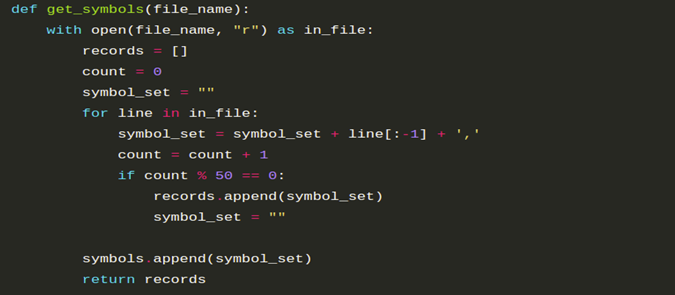- App Development Services
- application areas of Java
- application development company
- comparison between java and python
- difference between java and python
- features of java
- Features of Python
- Java & Python Compression
- Java VS Python
- live examples of java based applications
- python versus java
- python vs java
- Understanding Java
- why java is better than python
- why java is popular programming language
Programming has made its fair share of contributions to technology, becoming more advanced daily, empowering the business world. Often hailed as a pinnacle of digital infrastructure and modernization, a programming language entails a group of commands and codes for designing a software program. Technically speaking, the viability of programming languages in software development isn’t underestimated, thanks to their virtues for developers. However, choosing the right programming language is a mind-numbing task, even for expert programmers.
In this context, Java vs Python emerges as a key consideration, given both programming languages are platform-independent and supported by a large community of enterprise application developers worldwide. When it comes to building enterprise software solutions, choosing between Python and Java requires a deep understanding of which language syntax can fulfill your project requirement on every quality parameter.
Understanding Python and Its Key Characteristics
Developed by Guido van Rossum, Python is defined as an object-oriented, high-level GPL (general purpose programming language) with a design philosophy tied to dynamic semantics and code readability. It is also known as a programming language supporting various programming paradigms (a technique to classify programming languages based on features). It is touted as a beginners’ friendly language due to its graspable concepts. Statista reports that Python secured the top position in the list of most searchable programming languages for the year 2019.
Python is used in diverse areas:
- Server-side web development
- Software development
- Mathematics
- System scripting
Python comes equipped with some excellent traits:
- Dynamic binding/typing
- Built-in data structures
- Easily learnable syntax permitting reduced maintenance costs
- Code reusability (in Python-supported modules)
Being an open-source community language, Python is supported by a large number of independent programmers/developers from around the world who continue to update libraries and functionality for Python. The use of Python is an excellent choice for companies that solely focus on analyzing data and automating operations based on DevOps to build enterprise applications. The purpose behind building Python was to make it featured with extensibility via modules. In software engineering terminology, the term ‘extensibility’ means extending the measurable capability of a system for future growth.
What makes mobile app development using Python good is that the language features a free resource library and interpreter. So, it is an excellent choice for developers or enterprises who want to avoid expensive application development costs. Python as a support language helps developers to test and build control with sufficient management styles, as well as being friendly for project management. The main feature of Python is that it attempts to be a simpler and visually uncluttered language, thereby helping developers implement it in their coding methodology to build enterprise apps.
Application Areas of Python
- Building server-side web applications
- Building production-ready software
- Processing Big Data
- Reading & modifying files
- Software prototyping
- Processing complex mathematics
- Data science implementations
- AI & Game Development
- GUI-based desktop apps
- Game development
- Web apps and frameworks
- Graphic design & image processing apps
- Computational apps
Key Features of Python
- Cross-platform compatibility (e.g. Windows, Mac, Linux, Raspberry Pi, etc.)
- Easily learnable syntax
- Interpreter-system-based operations, enabling faster code execution and prototype tracking
- Can be used in a functional or object-oriented way
- Robust standard library and thousands of components to be utilized by developers
- Already interpreted, meaning source code is executed line by line
- Code reusability, meaning the same code can be used on different machines
- Support for Graphical User Interface to facilitate interaction with the software
- Doesn’t bother developers to remember system architecture, as it is a high-level programming language
Top Popular Companies Using Python-Based Applications
- Yahoo
- YouTube
- Microsoft
- Dropbox
- Mozilla
- Spotify
- Cisco
Drawbacks of Python Programming Language
- Poor Memory Efficiency: Python is problematic because of its poor memory efficiency. In other words, it depends on too much memory consumption due to the flexibility of data type, causing problems when you want to optimize memory-intensive tasks while developing an application.
- Poor Speed Of Execution: Slow speed is one of the biggest disadvantages of Python. Since it executes code one line at a time, it compromises the speed of execution. To say the least, in an enterprise application development where speed matters, employing Python for coding is an ideal recommendation.
- Database Access: Python features a limited and primitive database access layer. Unlike technologies like Open Database Connectivity, Python has an underdeveloped database access layer. It simply means that the programming language is not viable for deployment to ensure hassle-free interaction of rather complex legacy data.
- Runtime Errors: Python faces several design-related issues and it requires more testing. Python’s data types of variables are volatile. Python encounters runtime errors as it is a dynamically typed language.
- Not Suitable For Front-End Programming: Python is not considered suitable for front-end programming as it is mostly heavy on memory consumption which is suitable for back-end programming.
Understanding Java and Its Key Characteristics
Java is a high-level, object-oriented programming language with wide application areas, ranging from mobile apps, and enterprise software to big data applications, and server-side technologies. Java was initially meant to let programmers follow the WORA (write once, run anywhere) principle so that the compiled Java code can be run on any Java-supported platform without having to recompile the code.
Originally developed by James Gosling at Sun Microsystems, java was officially released in 1995 as a core component of the Java platform of Sun Microsystems. Since then, it has gone through rapid changes to finally become one of the most sought-after programming languages in today’s digital world. Today java-based platform enables the seamless enterprise application development of various applications, while new products and digital services continue to show their dependence on Java.
Application Areas of Java Programming Language
1: Web-Based Programs
Since Java is a server-side programming language, it is used to build web-based applications using Java frameworks like Apache, Struts, Spring, etc. The programming language is also used in websites like Amazon, LinkedIn, and AliExpress.
2: Mobile App Development
Java is believed to be an officially declared programming language to build mobile apps, thanks to its collection of excellent programming tools including Netbeans and Eclipse. The Java toolsets are helpful for developers in coding and debugging programs. Besides, java comes packed with security features, robustness, hassle-free application, and cross-platform development capabilities needed for enterprise application development, thereby qualifying it to become an efficient language for developing mobile apps. Java-based mobile applications include Netflix, Uber, Google Earth, and Tinder.
3: Desktop GUI Applications
Java is considered a prolific language for developing GUI applications, thanks to its feature-loaded traits, like AWT, Swing API Java Foundation Classes, or the trendy one called JavaFX. Besides using Java to build advanced GUI applications, it is also used to build 3D graphical applications. ThinkFree and Acrobat Reader are examples of desktop applications built by Java.
4: Enterprise Applications
Versatility is one of the bargaining chips qualifying Java to be used for developing both web and mobile applications. Besides, it is considered an ideal programming language for developing enterprise applications, thanks to its features driving high-performance deliverance, security, and easy scalability.
The Java Enterprise Edition (Java EE) platform features an API and runtime environment that allows scripting and running enterprise software and web services. According to Oracle, Java is used in 97% of enterprise computers delivering superior performance and rapid computing performance output. Examples of Java-based enterprise apps are ERP (Enterprise Resource Planning) systems and CRM (Customer Resource Management) systems.
5: Scientific Applications
The use of Java to build scientific applications stems from the fact that it comes equipped with powerful security and robustness. The language also drives impressive results in mathematical operations and coding scientific calculations. Java-based programs feature rapid performance output and better security, exceptional portability, and deliver productivity at the lowest maintenance requirement. Mat Lab is an example of a Java-based scientific app for interacting with UI and a part of the core system.
6: Web and Application Servers
Java ecosystem offers a whole gamut of applications and web servers, including –
- Apache Tomcat
- Apache TomEE
- Jetty
- Project Jigsaw
- Oracle WebLogic
- Rimfaxe Web Server (RWS)
While web servers of Java dominate the space, application servers have commercial advances in the tech industry.
Application Areas of Java
- Building low-level embedded systems like SIM cards and Blue-Ray Discs to be used in big electromechanical systems
- Building server-side applications for the financial industry
- Developing trading applications
- Building Big Data technologies in which Java is used for automating processes like Garbage Collection and Memory Distribution, etc
- Developing gaming applications which Java supports with its robust 3D-engine and jMonkeyEngine
- Building cloud-based applications due to Java’s robustness, ease of use, and multi-platform capabilities
Salient Features of Java
- Its runtime checking (RTC) ensures the automatic detection of runtime errors. The simple meaning of this is that Java RTC helps developers with error-free programming.
- An easily learnable language that also features structurally stable processes for beginners to build apps easily
- Object-oriented language, meaning Java is exclusively defined by its identity, state, and behavior
- The multi-threaded nature of Java enables Java-based programs and applications to run isolated but execute them at the same time
- The security feature of Java is great as it has multi-layers of security to build and run virus-free coding environments
- Platform independence is another feature of Java as its code, once compiled, can be used on different platforms. No need for code recompilation
- The portability of Java helps developers to convert Java’s compiled code into bytecode on any platform
- Java doesn’t discriminate with any software platform architecture, given its bytecode interpreter can be used on any platform
- Java’s ability to use distributed language systems helps developers move and access code between different machines, securely
What Makes Java a Popular Programming Language?
Based on how Java prototypes the semblance of what technology would look like in the future, it leaves us with no doubt that Java is a very important programming language. Its ever-increasing popularity is largely attributed to its capability of facilitating the enterprise application development of portable and high-performance apps for various computing platforms as well as enabling cross-platform interaction. In turn, Java-based applications help companies stay competitive by providing more services, increasing end-user productivity, maintaining seamless communication, and reducing the ownership cost of enterprise and consumer apps.
Top Popular Companies Using Java-Based Applications
- Microsoft
- Uber
- Netflix
- PayPal
- Amazon
- Airbnb
- eBay
- Meta Platforms
- Spotify
Drawbacks of Java Programming Language
1. Average Performance and Slow Speed
Despite all the features and interesting traits, Java’s performance is slower than C/C++. The reason behind the slow performance is that its code has to be deciphered to machine-level code every single time, causing an additional step to execute the program by Java Virtual Machine.
Performance is also sluggish as the Garbage Collection piles pressure on the CPU by taking more time and memory space. This is because garbage collection is an automatic process not controlled by developers and so, it results in the overconsumption of memory space.
2. Without a Standby Facility for Code
As a developer, you will get excellent storage of code and data in Java but can’t leave them on standby for later use. This simply means that while you can code some programs and run them using available data and code in Java, problems will surface once you find them disappeared and you need to tweak the programs in the future.
3. Boring and Unworthy GUI
Though Java comes featured with many popular frameworks and builders like Swing toolkit and JavaFX to build good-looking GUI, the problem surfaces when these tools are used to build complex and rich interfaces. A programming language that doesn’t help developers build an attractive interface conclusively gets boring and useless.
4. Unreadable and Complex Code
Java’s syntax uses long, complex sentences and complicated words to make the program manageable. Therefore, the syntax is not easy to read and can’t be memorized as well. This means the language doesn’t appeal much to the programmers, especially when it comes to coding something long and tricky.
5. Overconsumption of Memory Space
Garbage Collection is an excellent Java program because of its execution. However, it results in adverse effects on the memory efficiency and CPU performance of the program. This is because Jave heavily relies on enormous memory space and storage. This problem is another reason behind Java becoming a slow programming language.
Java vs Python: The Battle of Ascendency
In this section, we are discussing a comparative analysis of Java vs Python based on different parameters to ensure they are aptly benchmarked, conforming to quality standards, viability, productivity, and efficiency. Python has advantages over Java, be it simplicity with its concise and readable syntax, faster development time, and a vast ecosystem of libraries well-suited for data science, machine learning, and web development. It also boasts dynamic typing, which allows for greater flexibility in coding.
1: Comparison Based on Popularity
Both Java and Python have massive popularity worldwide. In 2018, python rose to fame by outpacing C++. In 2021, GitHub’s Octoverse ranked Java as the world’s 3rd most popular programming language, outpacing both JS and Python. However, Python bounced back with a surge in popularity by 48.24% compared to Java’s 35.35%, according to Stackoverflow’s Developer Survey in 2021.
Based on popularity and the latest trends, Python’s advantages over Java are apparent, yet Java vs Python remains a heated debate, as both continue to offer fierce competition worldwide.
2: Comparison Based on Language Syntax
While using Python which is a dynamically typed language, you don’t have to define variable types or input variables during the runtime. In turn, you experience that Python gives you an impression of easy syntax. Besides, the language doesn’t rely on enclosing braces or indention rules so the code doesn’t seem complex to read and people can write pseudocode.

On the other hand, Java performs in a way that is considered diametrically opposite to Python’s syntax rules. A programmer has to involve all the variables while ruling out any room for erroneous or anomalous code. If it happens, the program will run into errors. It simply means that Java follows strict syntax rules, considering it is a statically typed language in which developers have to clearly define the variable types to avoid the detection of an anomaly in the code.
Moreover, a block or method with various lines needs to be defined in Java by putting the lines in curly brackets. In Python, indentation for writing blocks with various lines is allowed.

Does that make Java less popular than Python?
Well, it depends on your perspective of you as a developer. If you are okay with following indentation rules, you will lean on Java quite naturally. On the other hand, if you want your program simple without many variables and anomalies in large codebases, Python is good to go for your requirements.
3: Comparison Based on Performance
The performance-based difference between Java and Python is that Java uses a static-typing syntax which allows easy code compilation and is faster compared to the dynamically-typed syntax of Python.
So, Java has less likelihood of risking errors. It targets the platform that expects better performance. Moreover, Java’s Just-in-time (JIT) compiler compiles bytecode into the native machine to call compiled code directly to ensure the speed and efficiency of the Java program. It, however, doesn’t belie the fact of how difficult and complex Java codes are.
On the other hand, Python is believed to outpace Java based on its highest market share of more than 15.42%, according to the TIOBE index (August 2022).
4: Comparison Based on the Architecture
Java’s runtime environment for code execution pans out a seamless architectural experience for the developers, helping them convert Java bytecode into machine language. Contact a reliable Java software development company to design your app maximizing core Java architecture.
On the other hand, in Python, bytecode is converted into machine code that is stored in a different folder that is not processed at runtime. As a result, the bytecode is received by a Python Virtual Machine in which the actual code is executed. The above comparison suggests how Java architecture performs more seamlessly than Python.
5: Comparison Based on Code Readability
The coding format of Python is linear and less dispersed as compared to Java. Python eliminates the need for putting a semicolon at the end of every station and rules out too much practicing of curly braces.
Example of Code Readability of Python

Example of Code Readability of Java

Based on the pictorial comparison above, Python conclusively wins in terms of ‘code readability’ points as compared to Java.
6: Comparison Based on Machine Learning
Since Machine Learning (ML) is a key part of programming languages for driving data-backed insights, let’s discuss how Java and Python perform respectively under this comparison. Python, as a language of syntactically easy to read and understandable, appears as a comfortable choice to experiment with the algorithm-intense field of machine learning. Besides, the language hosts top libraries for machine learning, including NumPy, SciPy, and Scikit-learn.
On the other hand, Java’s easy debugging and usage features make it an optional choice for enterprise-level programs, though it is considered a bit old for machine learning due to its complex syntax. Conclusively, we can say that Python has a winning edge over Java for ML.
7: Comparison Based on Gaming Development Functions
Since the PC Game development market is ruled by C++/C# programming languages, both Java and Python, therefore, seem to rule the roost in this comparison. However, Python is better at gaming development due to its low syntax complexities. It is also a user-friendly language for beginners. On the other hand, Java is reputed to be a good data science language supporting Big Data.
On that note, Python seems to be a winner.
8: Comparison Based on Programs
Python is used in various programs if speaking from a language development standpoint.
Python-based programs –
- Software prototyping
- Language development
- Machine learning apps
- Games
- Graphic designing, image processing
- Operating Systems
Java-based programs –
- Desktop GUI apps
- Mobile applications
- Middleware products
- Enterprise solutions
- Embedded Systems
Concluding Statements
While we have jotted down exclusive details based on comparative analysis between Java and Python, we conclude that either programming language can’t be disputed for their respective prominence in diverse application areas. While Java can be said as a language with massive popularity and broad application areas in various fields, it, however, doesn’t belie the fact that it is also disputed for having complex syntax and code readability issues.
On the other hand, Python is said to be a language that is widely used across the enterprise application development industry for organizational purposes and is considered an ideal language for algorithm-intensive ML tasks. Java is relatively faster than Python and preferred choice for enterprise-level programs whereas Python seems to have credibility for language development purposes, including Machine Learning applications.
Conclusively, both programming languages feature their respective essence, though it largely depends on the application areas for which either is demanded. That said, it depends on project size and complexity among other factors to finally decide whether you need Java or Python.
Should I hire a Java or Python development company for my project?
An ideal recommendation for hiring Python software development services is when you want to have a less complex application, given Python is simpler than Java. On the other hand, you can consider hiring a Java application development company for developing an enterprise application, as the language is more succinct than Python.
Frequently Asked Questions
Yes, Python is indeed suitable for enterprise applications due to several factors that contribute to its effectiveness in diverse business environments.
Key Information:
- Versatility: Python’s versatility allows developers to build a wide range of applications, from web and desktop to data processing and scientific applications.
- Large Standard Library: Python comes with a comprehensive standard library, providing pre-built modules that facilitate faster development of enterprise-level functionalities.
- Community and Support: Python has a large and active community, ensuring continuous support, regular updates, and a wealth of resources for enterprise developers.
Python versus Java differ in syntax, usage, and application areas. Python is known for its simplicity and concise syntax, making it ideal for beginners and rapid prototyping. Java has a more verbose syntax but offers strong performance and portability, making it suitable for large-scale, enterprise-level applications. Python is widely used in data science, machine learning, and scripting, while Java excels in mobile app development (via Android) and backend systems. The choice between Python versus Java depends on project requirements, scalability, and developer expertise.
Choosing between Java and Python depends on various factors, including the project requirements, development goals, and personal preferences. Here’s a comparison to help you make an informed decision:
Syntax and Readability:
- Java: More verbose syntax with explicit typing. It enforces strict rules, making it suitable for projects where code readability and maintainability are crucial.
- Python: Known for its clean and concise syntax. The use of indentation for code blocks enhances readability, making it a favorite for those who value simplicity.
Community and Ecosystem:
- Java: Boasts a robust and mature ecosystem with a strong focus on enterprise solutions. Popular frameworks include Spring, Hibernate, and Apache.
- Python: Has a large and active community. The Python Package Index (PyPI) offers a vast collection of libraries and frameworks, such as Django, Flask, and NumPy.
Performance:
- Java: Generally considered faster and more efficient, especially in applications that require high performance and scalability.
- Python: While not as performant as Java in certain scenarios, Python’s focus on simplicity and ease of use often outweighs performance considerations for many projects.
Here’s an overview of the top programming languages for business applications:
1. Python: Ideal for its simplicity and versatility, Python is widely used for data analysis, machine learning, web development, and automation. It’s highly favored for startups and scalable enterprise solutions.
2. Java: Known for its robustness and platform independence, Java excels in building large-scale enterprise software, Android apps, and backend systems.
3. JavaScript: Essential for web development, JavaScript is used for creating dynamic and interactive web applications, including front-end frameworks like React and Angular.
4. C#: Popular for Windows-based applications, C# is a strong choice for game development and enterprise software, particularly when paired with the .NET framework.
5. C/C++: These languages are used for system-level applications, performance-intensive tasks, and legacy systems in industries like finance and healthcare.
6. PHP: Known for web development, PHP powers content management systems (CMS) like WordPress and e-commerce platforms.
7. Swift: Ideal for Apple’s iOS applications, Swift offers modern syntax and performance optimization for mobile apps.
8. Objective-C: While mostly replaced by Swift, Objective-C remains in use for maintaining older iOS applications.
Python is known for its simplicity and readability, making it ideal for beginners and rapid development in fields like data science, machine learning, and scripting. Java, on the other hand, is a versatile, statically typed language widely used for building enterprise-level applications, mobile apps (via Android), and large-scale systems. The choice between python vs java depends on your project requirements and goals: Python for ease of use and speed, Java for scalability and performance.









